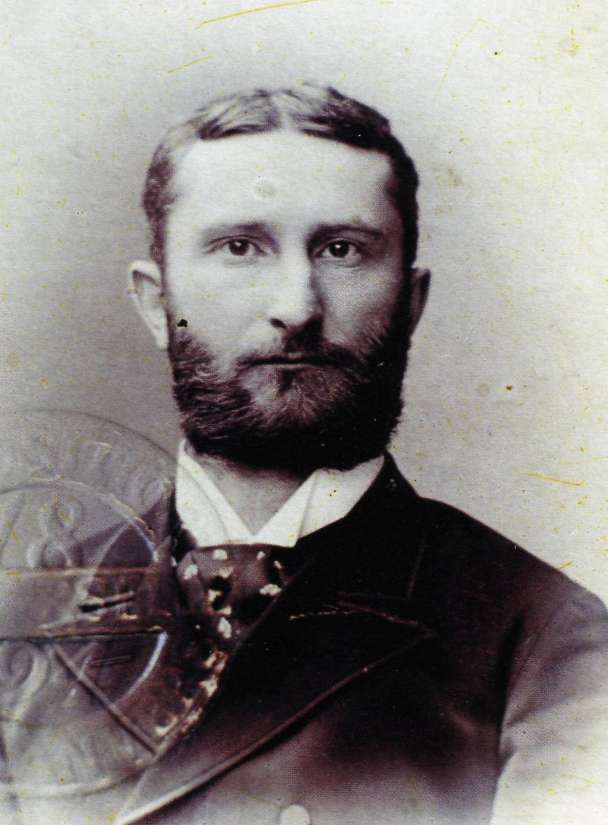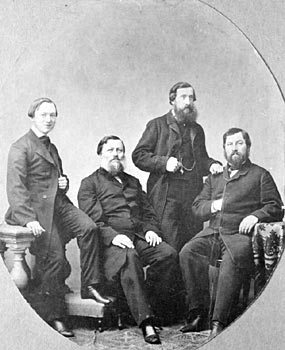|
Viktor Mazyrin
Viktor Aleksandrovich Mazyrin (30 May 1859, Alatyr – 1919, Moscow) was a Russian architect. His father, a military doctor, died when Viktor was quite young. He built several buildings for the Morozov family. Mazyrin died of typhoid fever Typhoid fever, also known as typhoid, is a disease caused by '' Salmonella'' serotype Typhi bacteria. Symptoms vary from mild to severe, and usually begin six to 30 days after exposure. Often there is a gradual onset of a high fever over several ... in 1919, and was buried in Moscow at the Pyatnitskoye cemetery. Gallery Moscow, Mashkova 17 Feb 2009 02.JPG, Mashkova Street References {{DEFAULTSORT:Mazyrin, Viktor 1859 births 1919 deaths 19th-century architects from the Russian Empire 20th-century Russian architects ... [...More Info...] [...Related Items...] OR: [Wikipedia] [Google] [Baidu] |
Alatyr, Chuvash Republic
Alatyr (russian: Ала́тырь; cv, Улатӑр ''Ulatăr'') is a town in the Chuvash Republic, Russia, located on the Sura River at its confluence with the Alatyr River. Population: 43,161 ( 2002 Census); 43,000 (1968). History Alatyr is one of the oldest towns in the republic. It was founded in 1552 as a fortified outpost where an old Mordvin village once stood, and was granted town status in 1780. Alatyr gained economic importance in 1894 after to the construction of the Moscow—Ryazan—Kazan railroad. Administrative and municipal status Within the framework of administrative divisions, Alatyr serves as the administrative center of Alatyrsky District, even though it is not a part of it.Law #28 As an administrative division, it is incorporated separately as the town of republic significance of Alatyr—an administrative unit with the status equal to that of the districts. As a municipal division, the town of republic significance of Alatyr is incorporated as Alatyr ... [...More Info...] [...Related Items...] OR: [Wikipedia] [Google] [Baidu] |
Moscow
Moscow ( , US chiefly ; rus, links=no, Москва, r=Moskva, p=mɐskˈva, a=Москва.ogg) is the capital and largest city of Russia. The city stands on the Moskva River in Central Russia, with a population estimated at 13.0 million residents within the city limits, over 17 million residents in the urban area, and over 21.5 million residents in the metropolitan area. The city covers an area of , while the urban area covers , and the metropolitan area covers over . Moscow is among the world's largest cities; being the most populous city entirely in Europe, the largest urban and metropolitan area in Europe, and the largest city by land area on the European continent. First documented in 1147, Moscow grew to become a prosperous and powerful city that served as the capital of the Grand Duchy that bears its name. When the Grand Duchy of Moscow evolved into the Tsardom of Russia, Moscow remained the political and economic center for most of the Tsardom's history. When th ... [...More Info...] [...Related Items...] OR: [Wikipedia] [Google] [Baidu] |
Russian People
, native_name_lang = ru , image = , caption = , population = , popplace = 118 million Russians in the Russian Federation (2002 ''Winkler Prins'' estimate) , region1 = , pop1 = approx. 7,500,000 (including Russian Jews and Russian Germans) , ref1 = , region2 = , pop2 = 7,170,000 (2018) ''including Crimea'' , ref2 = , region3 = , pop3 = 3,512,925 (2020) , ref3 = , region4 = , pop4 = 3,072,756 (2009)(including Russian Jews and Russian Germans) , ref4 = , region5 = , pop5 = 1,800,000 (2010)(Russian ancestry and Russian Germans and Jews) , ref5 = 35,000 (2018)(born in Russia) , region6 = , pop6 = 938,500 (2011)(including Russian Jews) , ref6 = , region7 = , pop7 = 809,530 (2019) , ref7 ... [...More Info...] [...Related Items...] OR: [Wikipedia] [Google] [Baidu] |
Architect
An architect is a person who plans, designs and oversees the construction of buildings. To practice architecture means to provide services in connection with the design of buildings and the space within the site surrounding the buildings that have human occupancy or use as their principal purpose. Etymologically, the term architect derives from the Latin ''architectus'', which derives from the Greek (''arkhi-'', chief + ''tekton'', builder), i.e., chief builder. The professional requirements for architects vary from place to place. An architect's decisions affect public safety, and thus the architect must undergo specialized training consisting of advanced education and a ''practicum'' (or internship) for practical experience to earn a Occupational licensing, license to practice architecture. Practical, technical, and academic requirements for becoming an architect vary by jurisdiction, though the formal study of architecture in academic institutions has played a pivotal role in ... [...More Info...] [...Related Items...] OR: [Wikipedia] [Google] [Baidu] |
Morozovs
The Morozovs (russian: Морозовы) is a famous Old Believers Russian family of merchants and entrepreneurs. The family name Morozov originates from a Russian word ''moroz'' (мороз) that means ''frost''. The founder of the family was Savva Vasilyevich Morozov (1770–1862). He had five sons and a daughter, Varvara Savvichna Morozova. The merchant family of Morozovs should not be confused with another famous Old Believer: boyarynya Feodosiya Morozova (and her family). The latter were boyars, whereas almost all the other famous Morozovs were merchants, and also descendants of peasants. Five sons Savva Vasilyevich's sons were all involved in his business: * Elisei Savvich Morozov (1798-1868) * Zhakar Savvich Morozov (1802–1857) * Abram Savvich Morozov (1806–1856) * Ivan Savvich Morozov (1810–1864) * Timofei Savvich Morozov (1823–1889) The four branches The family business was divided into four in 1871. * Zakharovichi: Ivan Zakharovich Morozov, (Bogorodsk ... [...More Info...] [...Related Items...] OR: [Wikipedia] [Google] [Baidu] |
Typhoid Fever
Typhoid fever, also known as typhoid, is a disease caused by '' Salmonella'' serotype Typhi bacteria. Symptoms vary from mild to severe, and usually begin six to 30 days after exposure. Often there is a gradual onset of a high fever over several days. This is commonly accompanied by weakness, abdominal pain, constipation, headaches, and mild vomiting. Some people develop a skin rash with rose colored spots. In severe cases, people may experience confusion. Without treatment, symptoms may last weeks or months. Diarrhea may be severe, but is uncommon. Other people may carry the bacterium without being affected, but they are still able to spread the disease. Typhoid fever is a type of enteric fever, along with paratyphoid fever. ''S. enterica'' Typhi is believed to infect and replicate only within humans. Typhoid is caused by the bacterium ''Salmonella enterica'' subsp. ''enterica'' serovar Typhi growing in the intestines, peyers patches, mesenteric lymph nodes, spleen, liver ... [...More Info...] [...Related Items...] OR: [Wikipedia] [Google] [Baidu] |
1859 Births
Events January–March * January 21 – José Mariano Salas (1797–1867) becomes Conservative interim President of Mexico. * January 24 ( O. S.) – Wallachia and Moldavia are united under Alexandru Ioan Cuza (Romania since 1866, final unification takes place on December 1, 1918; Transylvania and other regions are still missing at that time). * January 28 – The city of Olympia is incorporated in the Washington Territory of the United States of America. * February 2 – Miguel Miramón (1832–1867) becomes Conservative interim President of Mexico. * February 4 – German scholar Constantin von Tischendorf rediscovers the ''Codex Sinaiticus'', a 4th-century uncial manuscript of the Greek Bible, in Saint Catherine's Monastery on the foot of Mount Sinai, in the Khedivate of Egypt. * February 14 – Oregon is admitted as the 33rd U.S. state. * February 12 – The Mekteb-i Mülkiye School is founded in the Ottoman Empire. * February 17 – French naval forces under Char ... [...More Info...] [...Related Items...] OR: [Wikipedia] [Google] [Baidu] |
1919 Deaths
Events January * January 1 ** The Czechoslovak Legions occupy much of the self-proclaimed "free city" of Pressburg (now Bratislava), enforcing its incorporation into the new republic of Czechoslovakia. ** HMY ''Iolaire'' sinks off the coast of the Hebrides; 201 people, mostly servicemen returning home to Lewis and Harris, are killed. * January 2– 22 – Russian Civil War: The Red Army's Caspian-Caucasian Front begins the Northern Caucasus Operation against the White Army, but fails to make progress. * January 3 – The Faisal–Weizmann Agreement is signed by Emir Faisal (representing the Arab Kingdom of Hejaz) and Zionist leader Chaim Weizmann, for Arab–Jewish cooperation in the development of a Jewish homeland in Palestine, and an Arab nation in a large part of the Middle East. * January 5 – In Germany: ** Spartacist uprising in Berlin: The Marxist Spartacus League, with the newly formed Communist Party of Germany and the Independent Social Democ ... [...More Info...] [...Related Items...] OR: [Wikipedia] [Google] [Baidu] |
19th-century Architects From The Russian Empire
The 19th (nineteenth) century began on 1 January 1801 ( MDCCCI), and ended on 31 December 1900 ( MCM). The 19th century was the ninth century of the 2nd millennium. The 19th century was characterized by vast social upheaval. Slavery was abolished in much of Europe and the Americas. The First Industrial Revolution, though it began in the late 18th century, expanding beyond its British homeland for the first time during this century, particularly remaking the economies and societies of the Low Countries, the Rhineland, Northern Italy, and the Northeastern United States. A few decades later, the Second Industrial Revolution led to ever more massive urbanization and much higher levels of productivity, profit, and prosperity, a pattern that continued into the 20th century. The Islamic gunpowder empires fell into decline and European imperialism brought much of South Asia, Southeast Asia, and almost all of Africa under colonial rule. It was also marked by the collapse of the large S ... [...More Info...] [...Related Items...] OR: [Wikipedia] [Google] [Baidu] |






